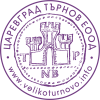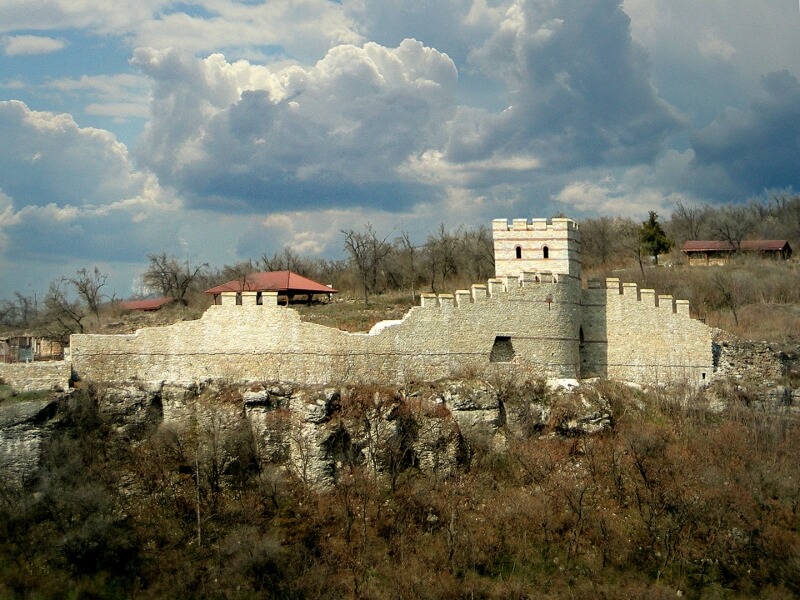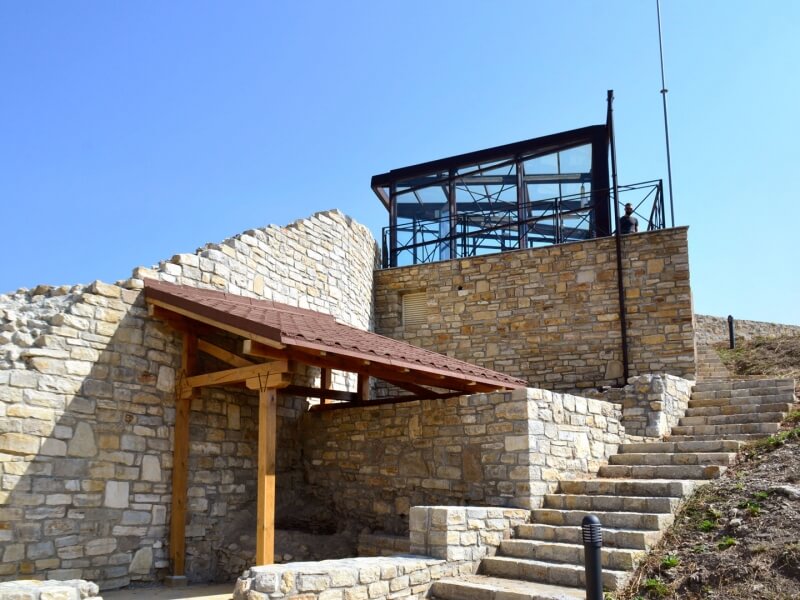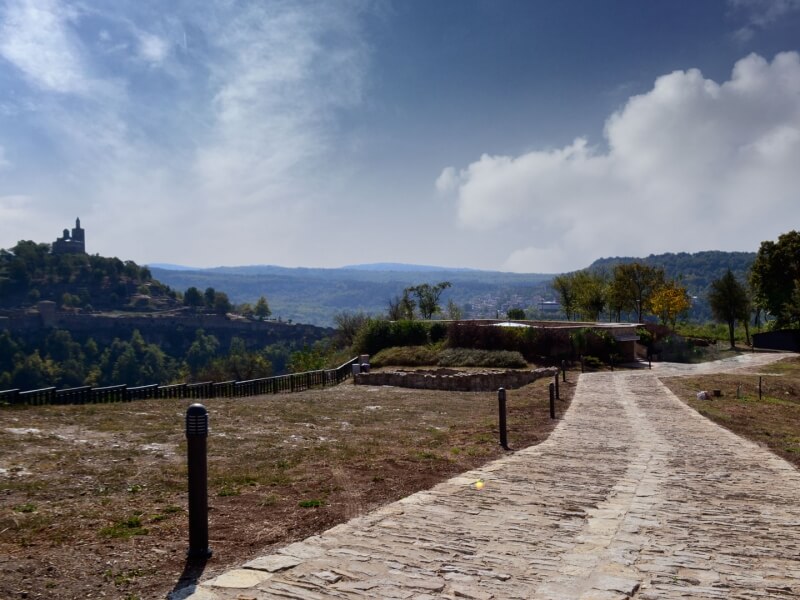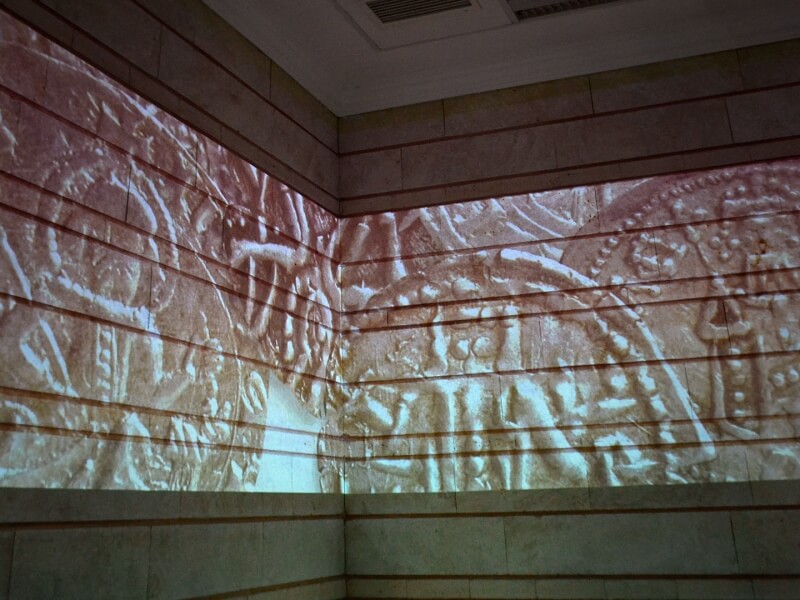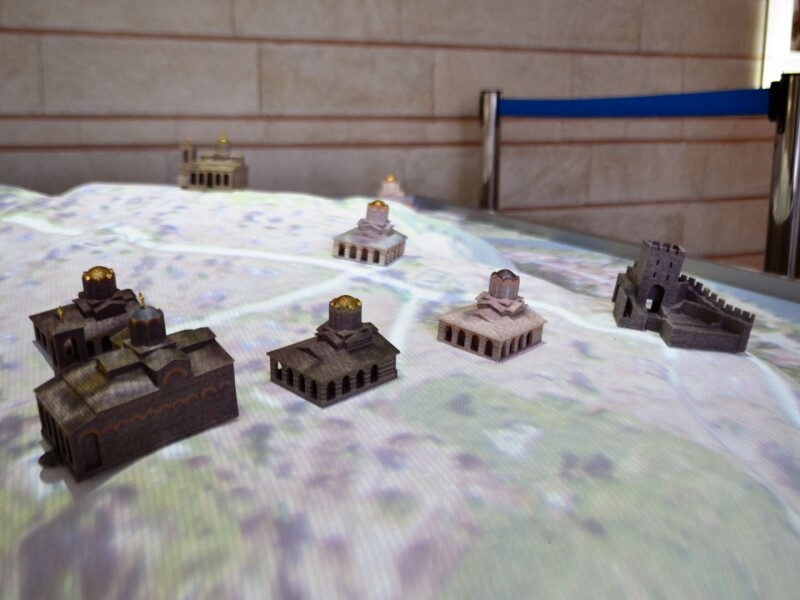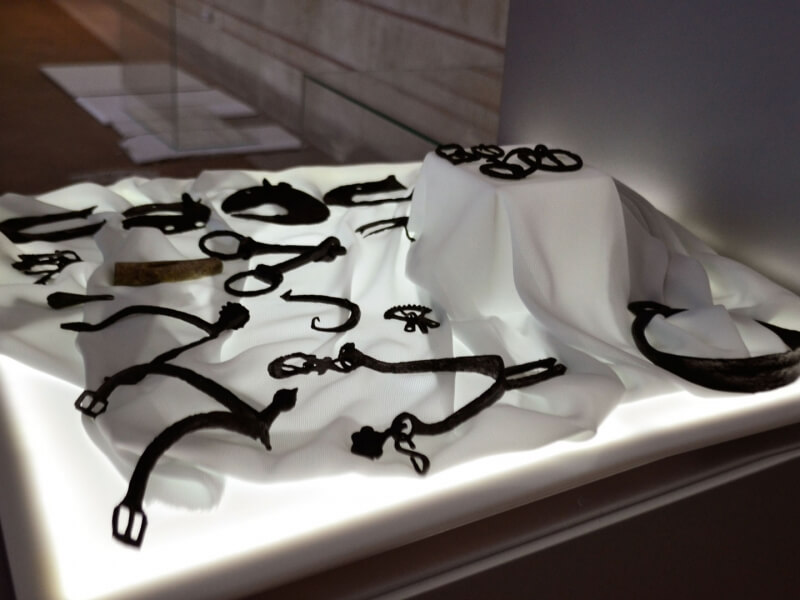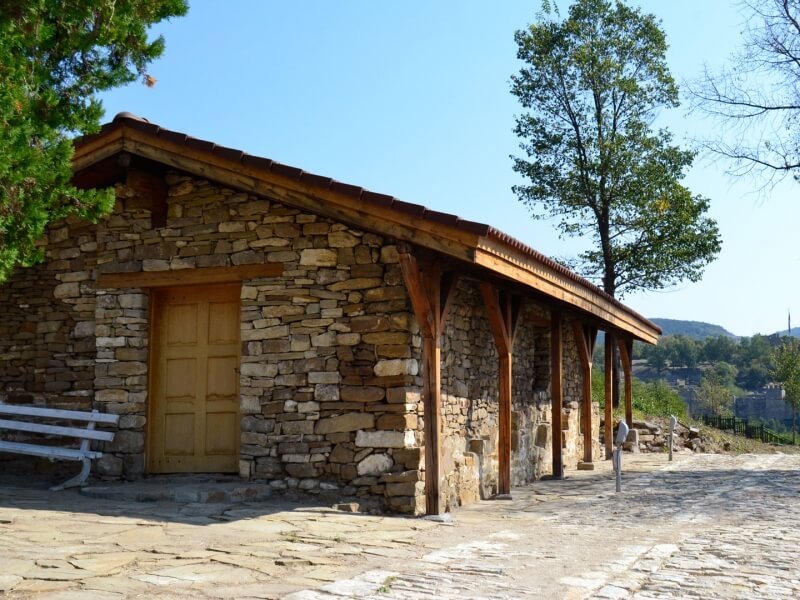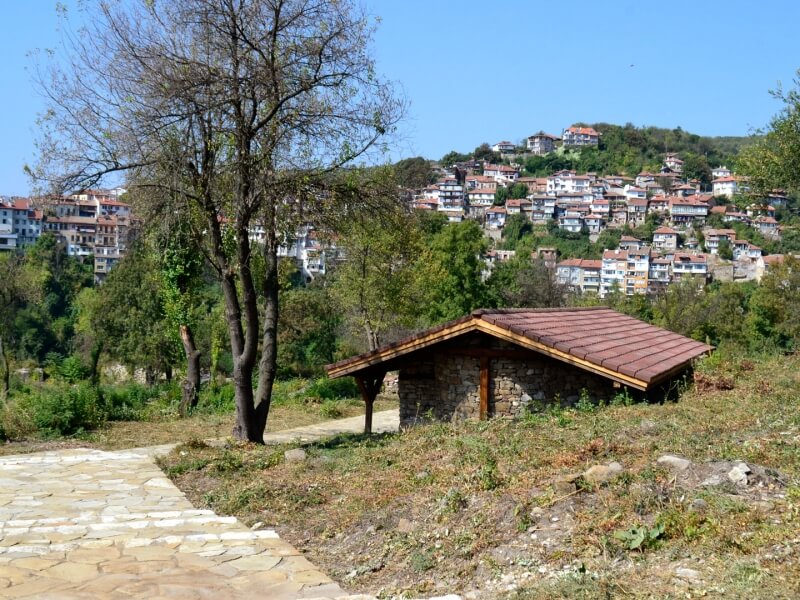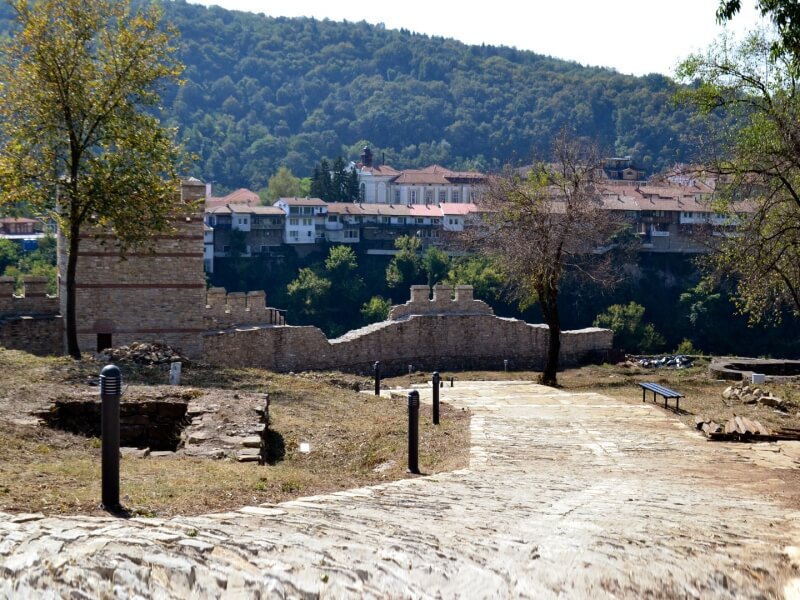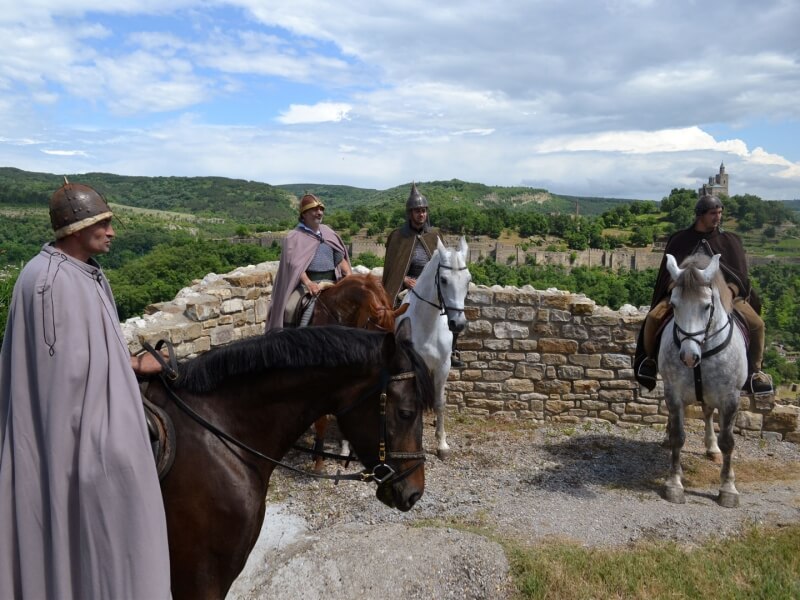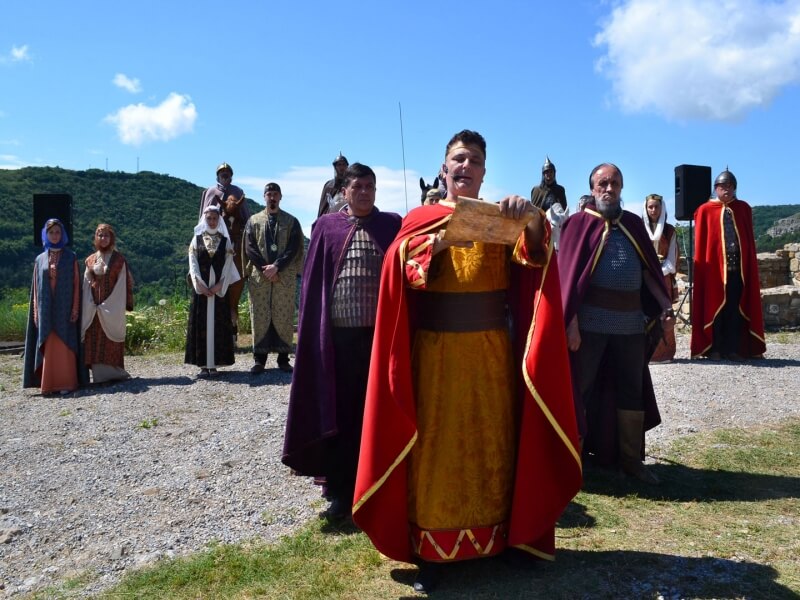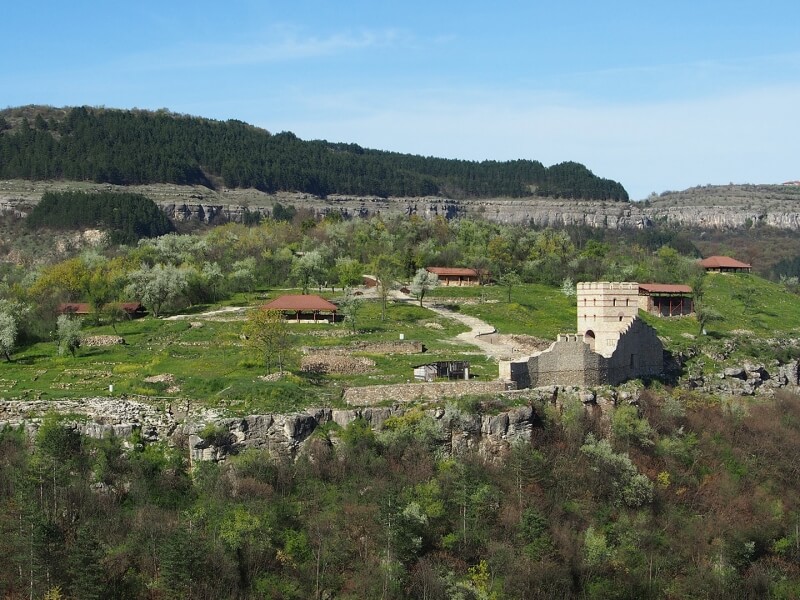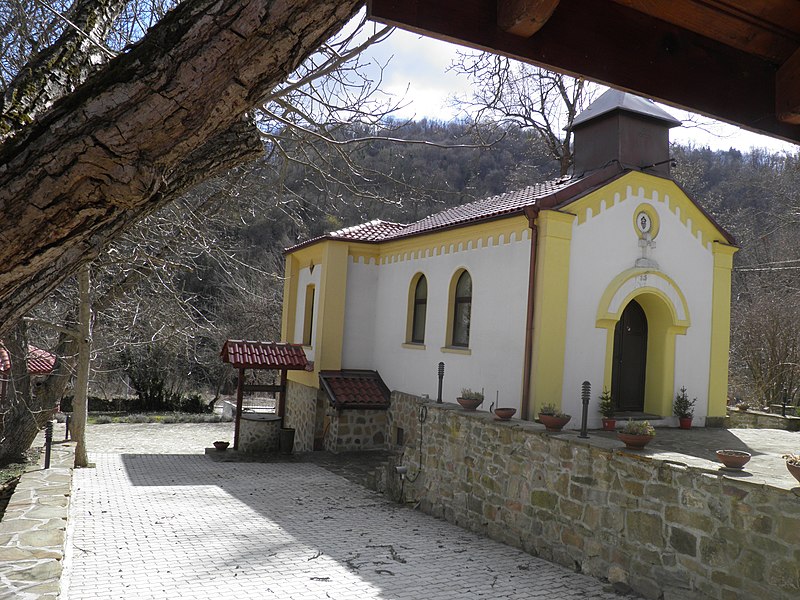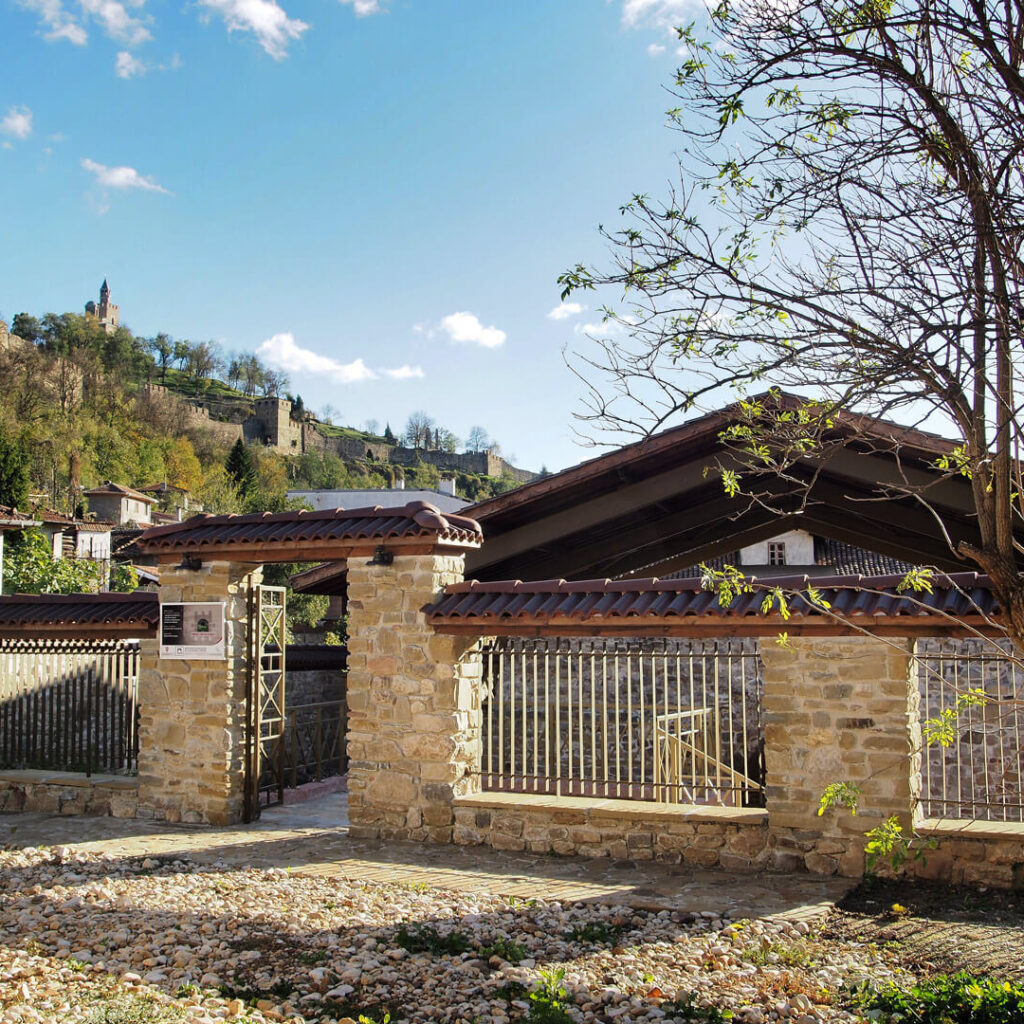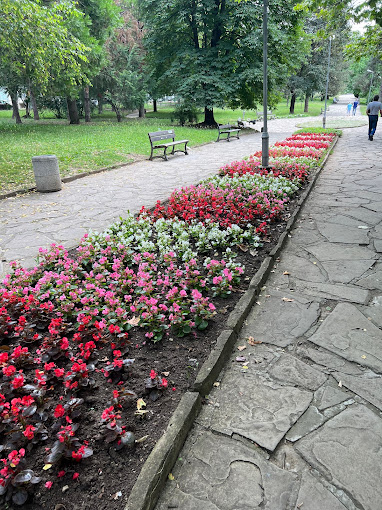Trapezitsa is the fortified quarter of the capital city of Tarnovgrad, situated to the north-west of the hill of Tsarevets. The Etar (Yantra) River winds in graceful meanders around the hill. Naturally protected by high cliffs, Trapezitza had solid fortification walls following the uneven cliff edge. It is about 80 decares in size.
The name of Trapezitza is believed to derive from the word “table” or from “trapezium” as is the shape of the plateau. However, the most likely origin is the word “trapezits” – soldiers guarding the passes who were the first settlers on the hill in the Middle Ages.
The “glorious city of Trapezitsa” with its churches and monasteries was mentioned in Medieval Bulgarian and Byzantine hagiographies of St. Ivan Rilski, including the one written by St. Patriarch Euthymius, as well as in “The Life of Gabriel Lesnovski” and in a number of inscriptions in Revival books.
The Archaeological Society in Tarnovo, the earliest one in Bulgaria, was the first to start excavating the fortress in 1879. The purpose of the archaeological society in Tarnovo was to “start excavating Trapezitza and other places, where historical monuments were likely to be unearthed.”
Parts of the defence system of the fortress, a military complex and 18 churches were localised during archaeological excavations, which continue to be carried nowadays too.
The main gate of the fortress faces north. An impressive building, covering 660 sq. m., supposedly built by the brothers Peter and Assen before the uprising of 1185, was uncovered close to the defence complex.
The churches on Trapezitsa were splendidly decorated with frescoes and multi-colour mosaics. The architectural decoration is diverse: pilasters, niches, blind arches, colorful tiles and round or four-leaf ceramic details glazed in green or yellow, arranged in one or more arch-like rows.
Church No 8, known as “St. Ivan Rilski”, is the largest one: 14.50 m wide and 20 m long. It was constructed in five phases. Tsar Assen I is known to have brought the relics of St. Ivan Rilski from Sredets (Sofia) to Tarnovo in 1195, which were placed in a church, specially constructed for this purpose on Trapezitza. The reliquary is believed to be in the southern part of Church No 8. The relics of the saint were kept there until 1469, when they were taken to the Rila Monastery.
Church No 8 is part of a monastery complex, where scattered remains of 43 persons were found in the Abbot’s premises.
The earliest church on Trapezitsa is Church No 16, which dates back to the late 10th – early 11th c.c.
Church No 5, the only one having mosaic decoration, dates back to the time of the Assenev brothers.
Churches No 2, No 7 and No 14 are known as “sepulcher churches”, because tomb equipment was found inside them.
A stone slab with a carved image of Archangel Michael was found in Church No 2 and it is supposed to belong to a frame, dedicated to the Holy Apostles.
Churches No 6, No 11, No 13 and No 14 are referred to as “royal churches” because of the depicted royalties in the mural decoration.
Seats and wash basins were unearthed along the walls of Church No 18.
Services were held until the mid-17th c. in some churches, when they were finally abandoned, probably because they were too old and also because the urban core shifted to the west.
The interactive display in the newly set up Trapezitsa Architectural Heritage Centre and Museum shows the splendour of the capital city of Tarnovgrad and the Second Bulgarian Kingdom. The exhibited artifacts, unearthed during recent archaeological excavations, take visitors to the past where they can see the customs and daily life of the aristocracy and of the ordinary people in one of the districts in the city.
